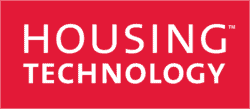Suppliers of housing management systems have often been criticised for not delivering functionality in line with trends seen in other sectors or applications, and for not actively listening to or engaging with customers enough when working on new developments.
Aareon has taken this feedback on board and fundamentally changed our development methodology for QL Next Generation (QLNG), the latest iteration of our housing management system.
The traditional approach of developing a new product is to look at existing solutions, identify any gaps, evaluate new trends in system design and then build the system using a dedicated team of developers until the new solution emerges after several months or even years.
A trumpet fanfare
At this point, the new arrival is pushed out to customers with a fanfare of trumpets heralding how great it is going to be and how it is so much better than its predecessor or anything else in the market. All well and good, but where is the customer validation? Have customer expectations truly been met? Does it deliver improvements over their current system?
QLNG builds on the solid foundations of the proven, tried and trusted business logic of the existing Aareon QL solution and presents users with a new browser-based view of their day-to-day work to deliver enhanced functionality and a better user experience. And backwards compatibility provides existing customers with a seamless transition path without the need to reconfigure business processes and workflows or embark on a time-consuming and expensive reimplementation.
The user experience
Adrian Taylor, Aareon UK’s research & development manager, said, “The new system is focused on the user experience and improves business processes by allowing users to complete their tasks as efficiently as possible in QLNG. Many housing systems have an emphasis on being ‘data focused’; QLNG is ‘user focused’ and is designed in conjunction with our customers to streamline those important processes and enable them to deliver outstanding services.”
The development of QLNG has been guided throughout by a group of our customers including Torus, Believe Housing and Bernicia, all of whom played active roles in shaping both the functionality and the user experience. A number of customers have made a commitment to the engagement programme which involves taking part in regular workshops focusing on specific processes, forming the requirements for improvements to the system, having regular feedback sessions which demonstrate new features and finally having access to pre-release versions of the software.
Iterative enhancements
In addition to receiving a license for QLNG, the customers get to shape the product through their influence on the engagement programme in conjunction with Aareon’s own technical expertise. This shared approach throughout the development lifecycle encompasses selection and identification of iterative enhancements as well as scheduling of the content for each release cycle to ensure priority functionality is delivered faster. The collaborative nature of the programme also leads to improved quality and user satisfaction.
Our engagement partners are relishing this approach. Dan McGrane from Halton Housing said, “I’m really impressed by how Aareon is approaching this from a development point of view; involving customers and their end-users in the whole process bodes really well for a great end-result.”
The full release of QLNG doesn’t mean the end of the engagement programme. Ongoing involvement in the evolution of the product allows customers on the engagement programme to get the future features they want in the product and in doing so, break the cycle of 5-10 year procurements because the system no longer matches their needs.
Ian Lockwood is the head of business development at Aareon UK.


